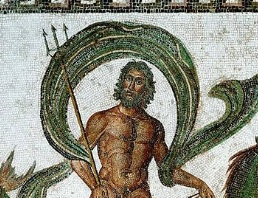Secret Life of Kites
- Cousin topics
- Secret Life of Kites- Embodied Logic
- EssayDiscuss: Secret Life of Kites: How to Drink from the AWE Knowledge Fire-Hose by Dave Santos
- Secret Life of Kites- Polymer Refrigeration
- Secret Life of Kites- Reversal-Instability: Why NPWs fly backwards, and it is "a feature not a bug" (below)
- v
Secret Life of Kites- Reversal-Instability: Why NPWs fly backwards, and it is "a feature not a bug"
Years ago, in his Newsletter, Peter Lynn Sr.
carped about an NPW's propensity to suddenly fly backwards, as a
defect, and to his credit went on to develop new SS Power Kites (PL
Uniq line) with a better sense of forward flight. At the other extreme,
kites that are "too good" (i.e. AWES kiteplanes) easily overfly the
kite window. Pilots do eventually master whatever wing they are
given.
kPower owns a full line of NPWs, from 1m2 to 32m2,
and flies them as much as anything else. Over the years the advice has
been "keep it moving," and if you do, the NPW does not reverse.
Gradually, a fuller picture emerged, that the NPW as a rule only
reverses when its nose is up in the center of the Kite Window. At
either side of the Window, the NPW will generally park rather well.
Compared to other power-kites, an NPW operates close to Dynamic Stall,
at high AoA, closer to what we may call Reversal-Instability.
At the center of the Window, gravity is pulling directly "backwards"
and a slight lull is all it takes to start backing down. This reverses
the airflow and the kite accelerates in reverse, and the average flier
may get confused and angry and not recover. At the side of the window
the kite is tilted on its ear, and gravity is not pulling "backwards,"
so it does not reverse.
The new advice is allow the NPW to occupy its
Zenith, but with a waggle motion that prevents reversal. Go ahead and
park to the side as needed. Here is the feature part- Most NPWs are
flown as two-line kites that do not reverse backwards on demand like
four-line. Therefore, landing like a four-line by tail-sitting is not
done. But now an NPW pro may deliberately induce the wing to reverse,
by a double-push motion, and bring it down decisively on its tail. Push
forward a bit more, and the NPW is then ideally set for relaunch.
Kite pros also know just how to launch and avoid
reversal. Often they know these things subconsciously, by "muscle
memory," and can hardly explain how they do it. The kite is peeled up
from lying on its back and promptly turned to fly sideways, before it
can reverse. This WindSled video shows an expert Buddy Launch by Hilo.
Note how he pulls back and peels up the nose. Hilo steps back safely
just beyond the reach of the kite, which could kill him otherwise, and the Pilot promptly turns the NPW sideways to get speed up. Its taken 50 years for NPW kiting to figure all this out this far, and there is always more to learn.
Secret Life of Kites- Sonic Relativity and Phonon QM in Ancient Greek Monochord?
Philolaus,
the arch-Pythagorean, laid an initial basis of harmonics for his
student, Archytas, to most rigorously work out and publish. This was
true Classical Greek Phonon-based QM, with the Monochord as their
"acoustic particle accelerator". Starting about 2007, "dancing" Kite
Dynamics led AWE (kite energy) research also led into a rabbit hole of
Phonon QM wave functions. At first, we cautiously labeled these
identities "analog QM," as Classical Limit Theory (wrongly) implied. In
time we gained confidence that we were witnessing canonical QM in our
Kite Dynamics.
The original QM error had been to assign Planck's Quantum of Action a fixed microscopic (THz frequency) value, rather than letting Planck's Constant be a true scale-invariant non-dimensional constant.
Observed Kite Dynamics thus recovered QM. We had smashed the Classical
Limit. Wave-functions are truly Scale Invariant. The side project then
arose to reconcile Pythagorean Monochord Harmonics with QM.
Unfortunately,
most Pythagorean texts are unreliable, due to rampant ancient
forgeries; very little undisputed content survived. The few brilliant
fragments of reliable provenance that exist are scientific gems that
present a correct (quantum integer) foundation for harmonic physics,
that stands to this day. However, the Pythgoreans were thought to have
blundered by varying musical pitch with sonic-c (speed of sound).
However, it turns out the Pythagoreans were
correct, IF we observe their Monochord as we have our Kiteline, whose
speed of sound does, in fact, vary with pitch, higher pitch = faster c,
when a musical string is tightened (Sonic Relativity)!
"Archytas took harmonic theory to a whole new level of theoretical and mathematical sophistication. Ptolemy, writing in the second century AD, identifies Archytas as having “engaged in the study of music most of all the Pythagoreans” (A16). First, Archytas provided a general explanation of pitch, arguing that the pitch of a sound depends on the speed with which the sound is propagated and travels (B1)...Archytas is correct to associate pitch with speed, but he misunderstood the role of speed. The pitch does not depend on the speed with which a sound reaches us but rather on the frequency of impacts in a given period of time. A string that vibrates more rapidly produces a sound of a higher pitch, but all sounds, regardless of pitch, travel at an equal velocity, if the medium is the same. Although Archytas’ account of pitch was ultimately incorrect, it was very influential. It was taken over and adapted by both Plato and Aristotle and remained the dominant theory throughout antiquity (Barker 1989, 41 n. 47; Barker 2014: 187)" Stanford Encyclopedia of Philosophy
End Notes:
Traveling waves at around 10m/sec velocity in
a slackened biopolymer line were easily seen by Greek scientists, but
in a fully tensioned line, velocity can range above 10km/sec. Anyone
who has "tuned up" a string instrument knows the associated increase in
pitch with this increase in c. However, to an observer "inside the
string" c appears constant. These dynamics are extremely determining in technical kite control.
A
Classical Harmonic Oscillator is an unphysical idealization. No
oscillator sustains zero energy in real spacetime; a Dirac Sea of
gravitational noise. The primary remaining distinction of Classical
Oscillator disappears when Time Dilation due to increased acceleration
across the Equilibrium Point is accounted for. The Classic temporal
view is of an observer apart from the Oscillator; the Quantum
Oscillator view is an observer moving with the spring-mass.
Time is nothing but clock-like motion, at any scale, in relation to all other motion at all scales.
The
Monochord is also a good model of quantum entanglement. In its
tensioned states, the two ends of the string host complimentary
entangled frozen-wave phonons, correlated at a distance in every
measurable property.
On
another "All Things Greek Kite Topic," it was long conjectured from
literary clues that ancient Hellenic civilization knew kite principles
widely known in East and South Asia. Recently, a positive
identification of arch-kite understanding is confirmed in the flying
mantles of Greek deities depicted in stone, mosaic, and fresco. The
kite domain-expert definition of a kite, used in judging kite
competitions, is any tethered aerodynamic object able to maintain a
flying angle above the horizon. These mantles pass the test.

Secret Life of Kites- Covid Endtime, "Signs and Wonders"
Stranger than fiction; it's a trend: Covid, Kites, Kids, and Energy:
- Tangled kites causing power outages in hospitals, says Meralco
- Kids playing with kites under power lines causing electricity outages in PE
- Matthew 18:3
 And he said: "Truly I tell you, unless you change and become like little children, you will never enter the kingdom of heaven.
And he said: "Truly I tell you, unless you change and become like little children, you will never enter the kingdom of heaven.
Secret Life of Kites- basic dynamics we are slowly clarifying
- KiteSurfers are dragged by looping kites that sustain flight. not just fall into the water. We see this is a DS effect of flying across the steep surface wind gradient. The kite goes into the bottom of the loop with enough momentum and turn input to complete the return into higher wind. This only seems to happen when the loop is tight down in the (ever steeper near-surface) gradient.
- Kitesurfing only works because a gust surge can push the human-anchor-point down-wind, minimizing peak force. Its a passive feed-back mechanism. AWES from a fixed anchor needs comparable powerful passive feedback compliance, by some added mechanism. For sport fishing, a flexible fishing rod is used. AWE may use any elastic solution desired.
We have known these critical lessons a long time, but need to pull them out and state them clearly. This is the most essential sort of AWE knowledge, not the fickle fortunes of the ventures, nor endless fascinating kite details.